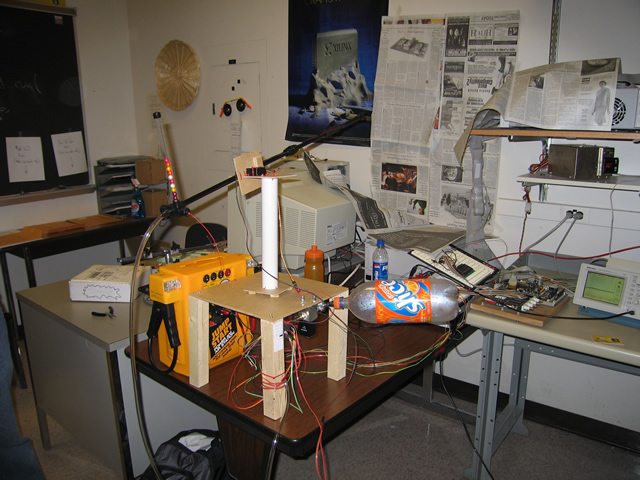
David Masselink – Swetha Patel – Michael Sullivan
University of Michigan – EECS 373 – Winter 2005

What It Does
A self-firing paintball blowgun, featuring autonomous target detection mode, manual aiming mode, magnetic strip card authentication, LCD status output, and audible safety warnings. The user first swiped their M-Card to authenticate their identity against a list of authorized users. Next, the user could switch between autonomous and manual mode using a switch on the lab board. In autonomous mode, the gun seeks out a special target circuit board and fires at it when found. In manual mode, the user can aim the gun left, right, up, and down, as well as fire using an 8-bit Nintendo controller. When triggering, the solenoid valve is activated, which allows compressed air to flow through the gun for a short time, firing the paintball. An LCD screen shows the status of the system at all times, and a logout button allows a user to safely leave the gun without having to turn the system off.
Interfaces
External Circuits
Several external circuits were necessary for the implementation of this project. One important circuit was the infrared emitting circuit. Our infrared detector only detects IR at 38KHz with a lower frequency carrier pulse, so we had to build a circuit to generate a signal with these characteristics. We used a 555 timer IC, in addition to NAND gates and a counter to accomplish this. This circuit was unique since it was entirely isolated from the rest of our project. It had a 9V battery power supply which was regulated to a TTL 5V. The circuit could then be held across the room from our turret and be sensed whenever the IR receiver was pointed directly at it.
Another essential circuit was our isolation circuit for the solenoid valve. Our solenoid valve required 12VDC at over 1A, so it was necessary to isolate it from the rest of the circuit (especially the FPGA and MPC823). We accomplished this by creating a circuit based on an opto-isolator and a 5V relay. The signal from an FPGA test pin would activate the opto-isolator’s LED and consequentially its photo-transistor and amplify current to drive the relay. The relay would then connect the valve solenoid to an external 12V power supply. This allowed a high power and high potential for EMI circuit to be isolated from the rest of our project and added reliability and robustness to our system.
Difficulties
Video
Autonomous Mode video (.avi, 18.2 MB)
Pictures
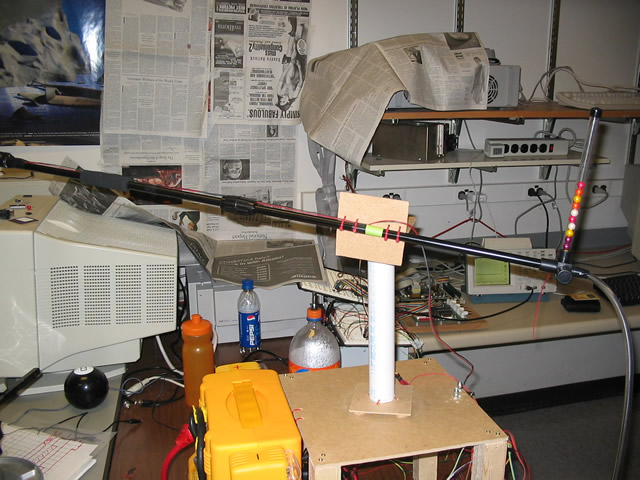
The blowgun and custom-designed turret

Another shot of the turret
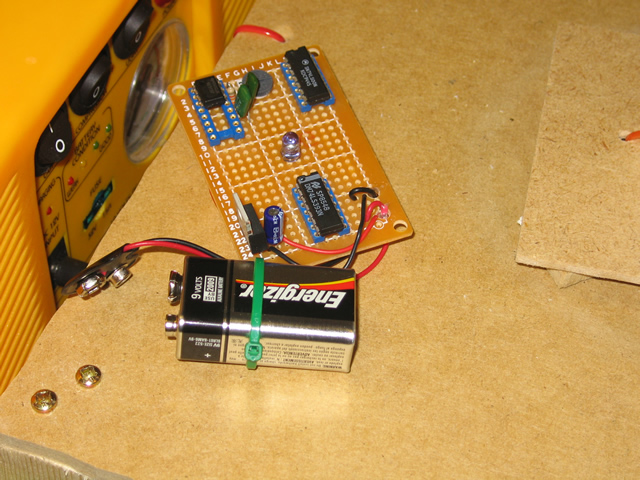
Our "target" for autonomous mode - Emits a 38-KHz infrared signal
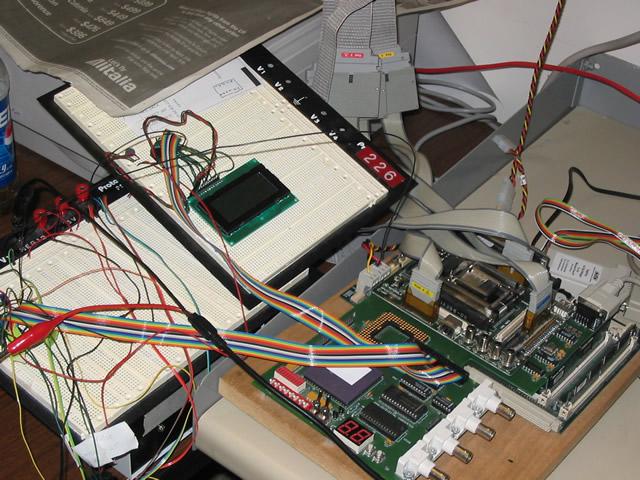
PowerPC and Xilinx development boards connected to our project proto boards
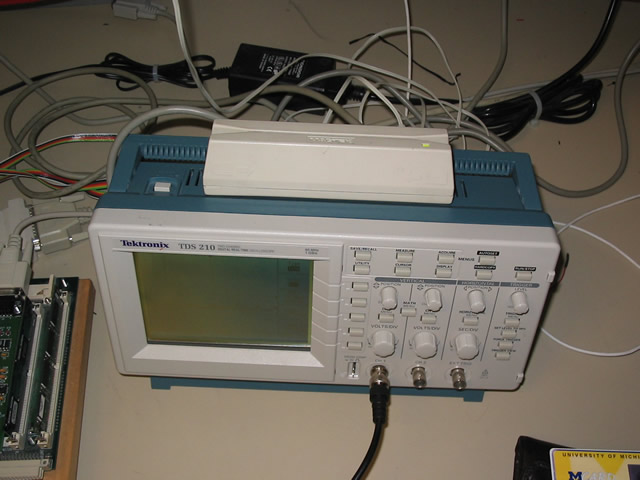
Magnetic stripe card reader

Our intimindating authentication screen

The Nintendo controller

After the presentation